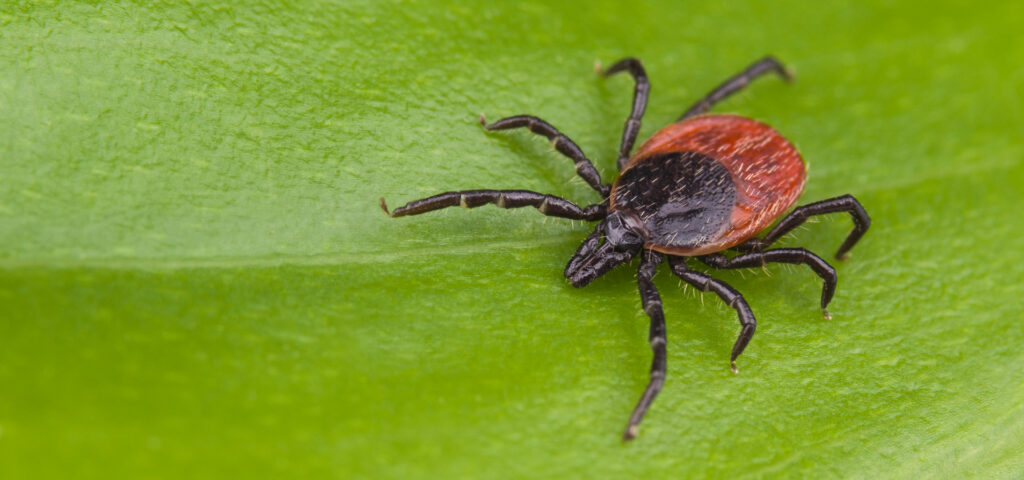Tick Biology
The most common ticks in the Twin Cities and surrounding areas are the American dog tick and the blacklegged tick. Both of these ticks live about 2 years. They spend their first year as a larval tick, then progress into a nymph and then an adult. They do not have a pupal stage, nor do they go through a complete metamorphosis. They feed on blood their entire life, typically starting with appropriately sized prey. Young ticks feed on mice, lizards, and other small animals. Female ticks need a blood meal before laying eggs, and all ticks need a blood meal to progress into the next stage of their life cycle. To find a host, a tick will wait at the end of a low-hanging branch, grass, or leaf litter with its front pairs of legs extended, waiting to grab onto a host as they pass by. This process is called questing. This is typically done around knee height.
Ticks will find a suitable host and search for a secluded area on the host’s body to attach to and feed off of, often in groin/armpits/hairlines. Some ticks will secrete saliva with a numbing agent before penetrating the skin so the host does not feel them there. Ticks will typically feed for 5-7 days before dropping off and starting the next stage in their life cycle. Male ticks do not feed on blood, and die after mating.
Tick Life Cycle
Ticks lay 2000-3000 eggs in a cluster under leaf litter in late spring, hatching in late summer. They stay in the nymphal stage until the following spring when they reach adulthood. The following spring, they will lay eggs before ending their life cycle. At any point in this life cycle, the tick can and will bite hosts. If this tick acquires Lyme disease at any point, it will carry it throughout the rest of its life cycle. Their life cycle is not shortened due to the diseases they carry. The white-footed deer mouse is the main reservoir host for Lyme disease; white-footed deer mice are prevalent in our area, perpetuating this disease. Disease transfer from tick to host happens at different rates per different diseases. Some diseases are transferred within minutes of the tick attaching, and some after hours or even days.
American Dog Tick: These ticks have 6 legs early in their life cycle, and 8 by adulthood. They are flat and ovular, with white-gray or brown markings and brown or red-brown bodies.
Black Legged Tick: These are dark brown or black ticks with a distinctively different appearance than the American Dog Tick. They do not have markings on their backs and remain under ⅛ inch long.


Control Your Tick Problem Today!







